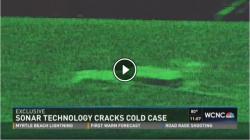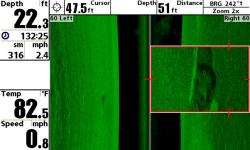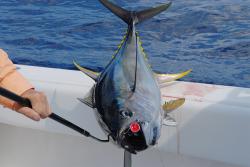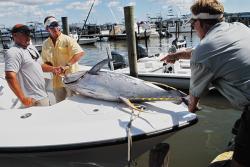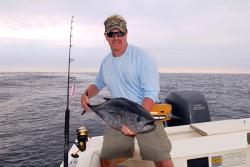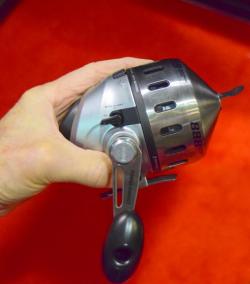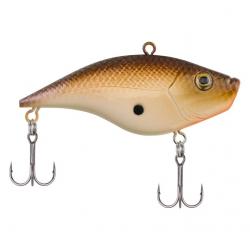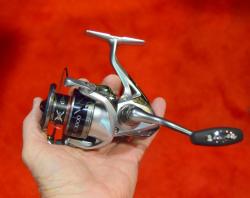Sportfishing Industry Presents the ICAST 2015 “Best of Show” Fishing Gear Awards
from The Fishing Wire
eddlyline wins “Best of Show” during the world’s largest sportfishing trade show
Orange County Convention Center, Orlando, FL The world’s largest sportfishing trade show, the International Convention of Allied Sportfishing Trades, better known as ICAST, is being held July 14 – 17, at the Orange County Convention Center Orlando, Fla. Produced by the American Sportfishing Association (ASA), the industry’s trade association, ICAST – in its 58th year as the industry’s trade show – is the annual destination for the global recreational fishing industry. More than 12,000 representatives from the global sportfishing industry are in Orlando to see the latest innovations in tackle, gear, accessories and apparel.
The single most important feature for ICAST exhibitors and attendees alike is the New Product Showcase. The New Product Showcase, sponsored by Fishing Tackle Retailer, embodies the sportfishing industry’s innovative and entrepreneurial spirit and rewards that ingenuity through the “Best of Show” new product awards competition.
This year, 270 companies submitted 889 products in the New Product Showcase, all vying for the “Best of Show” award in 24 categories and for the overall ICAST 2015 “Best of Show” award.
Making up a special section of ICAST’s half a million gross square feet show floor, the New Product Showcase provides special visibility for the industry’s latest innovations in gear, apparel and accessories.
Best of Show Awards
This year, first time exhibitor eddyline kayaks and their C-135 YakAttack Edition, was voted by buyers and media as the best product in both the Boat category and the overall “Best of Show.”
“We are still a family-owned company, after 44 years,” said Tom Remsing, eddyline kayaks Sales manager. “With limited resources and a lot of drive, our staff worked very hard to bring this product to fruition. It’s an honor to win the Best of Show.”
This year’s New Product Showcase winner’s also included first-time ICAST exhibitors Under Armour, Lifeshirt, RinseKit and YOLOtek.
“I congratulate all of the winners and everyone who participated in the New Product Showcase. Every year it’s amazing to see all the creativity and ingenuity our member companies use to add curiosity, excitement and discovery to the adventure of fishing,” said ASA President and CEO Mike Nussman. “I also thank Fishing Tackle Retailer for their sponsorship of this important event.”
The ICAST 2015 “Best of Show” awards were presented on Wednesday, July 15, during the Chairman’s Industry Awards Reception, sponsored by Costa, at the Orange County Convention Center.
2015 ICAST New Product Showcase Award Winners
For product details, images and other information please contact the individual award winners’ contacts listed below.
ICAST 2015 Overall Best of Show – eddyline kayaks
Product: eddyline C-135 YakAttack Edition
Media Contact: Tom Remsing remsing@eddyline.com
Best of Show – Freshwater Rod – G. Loomis, Inc.
Product: E6X Bass
Media Contact: John Mazurkiewicz jpmazurk@ameritech.net
Best of Show – Saltwater Rod – St. Croix Rods
Product: Avid Inshore
Media Contact: Rich Belanger richb@stcroixrods.com
Best of Show – Fly Fishing Rod – St. Croix Rods
Product: Mojo Bass Fly
Media Contact: Rich Belanger richb@stcroixrods.com
Best of Show – Freshwater Reel – Shimano American Corporation
Product: STRADIC C3000HG-K
Media Contact: John Mazurkiewicz jpmazurk@ameritech.net
Best of Show – Saltwater Reel – Pure Fishing, Inc.
Product: PENN Clash
Media Contact: Ron Giudice ron@blueherron.com
Best of Show – Fly Reel – Pure Fishing, Inc.
Product: New Pflueger Medalist Fly Reel
Media Contact: Ron Giudice ron@blueherron.com
Best of Show – Hard Lure – Savage Gear
Product: Hard Shrimp
Media Contact: Brandon Cotton brandon.cotton@okumafishing.com
Best of Show – Soft Lure – Koppers Fishing
Product: LIVETARGET Hollow Body Sunfish
Media Contact: Tom Chopin tom@kopperfishing.com
Best of Show – Lifestyle Apparel – Under Armour, Inc.
Product: UA Storm Covert Pant
Media Contact: Eddie Stevenson eddie@driftwoodmedia.com
Best of Show – Technical Apparel – Lifeshirt
Product: Aegis Lifeshirt
Media Contact: Jim Emmons jemmons@lifeshirt.com
Best of Show – Boating Accessories – YETI Coolers
Product: YETI Hopper 20
Media Contact: Mike May mikemay@backbonemedia.com
Best of Show – Boats – eddyline kayaks
Product: eddyline C-135 YakAttack Edition
Media Contact: Tom Remsing remsing@eddyline.com
Best of Show – Combo – Lew’s Fishing Tackle
Product: Mach 1 Combo
Media Contact: Gary Dollahon gary@dollahonpr.com
Best of Show – Electronics –Johnson Outdoors
Product: Humminbird HELIX 7 SI
Media Contact: Jim Edlund jim@traditionsmedia.com
Best of Show – Eyewear – Costa
Product: Rooster
Media Contact: Liza Jones liza@fullcirclepr.com
Best of Show – Fishing Accessory – RinseKit
Product: RinseKit
Media Contact: Whitney Coombs whitney@verdepr.com
Best of Show – FishSmart – Release Ruler
Product: Freshwater Release Rulers
Media Contact: Neilson Paty neilson@jettyproductions.com
Best of Show – Fly Fishing Accessory – Simms Fishing Products
Product: G3 Guide Stockingfoot
Media Contact: Rich Hohne rhohne@simmsfishig.com
Best of Show – Footwear – Simms Fishing Products
Product: Current Shoes
Media Contact: Rich Hohne rhohne@simmsfishig.com
Best of Show – Giftware – YOLOtek Product:PowerStick
Media Contact: Christian Corley christian@yolotek.com
Best of Show – Kids’ Tackle – Steinhauser, LLC
Product: Tangle-FREE Combo
Media Contact: Ralph Duda rduda@lilanglers.com
Best of Show – Line – PowerPro
Product: Maxcuatro
Media Contact: John Mazurkiewicz jpmazurk@ameritech.net
Best of Show – Tackle Management – Eposeidon Outdoor Adventures, Inc.
Product: KastKing Rack ’em Up Rod Racks
Media Contact: Tom Gahan tgahan@eposeidon.com
Best of Show – Terminal Tackle – Eagle Claw Fishing Tackle
Product: Lazer Sharp Fillet Knife
Media Contact: Nickie Kiefer nkiefer@eagleclaw.com
ICAST 2016 will be held at the Orange County Convention Center, Orlando, Fla., July 12 – 15, 2016. For complete ICAST information, visit ICASTfishing.org.
###
The American Sportfishing Association (ASA) is the sportfishing industry’s trade association committed to representing the interests of the entire sportfishing community. We give the industry a unified voice, speaking out on behalf of sportfishing and boating industries, state and federal natural resource agencies, conservation organizations, angler advocacy groups and outdoor journalists when emerging laws and policies could significantly affect sportfishing business or sportfishing itself. ASA invests in long-term ventures to ensure the industry will remain strong and prosperous, as well as safeguard and promote the enduring social, economic and conservation values of sportfishing in America. ASA also gives America’s 60 million anglers a voice in policy decisions that affect their ability to sustainably fish on our nation’s waterways through KeepAmericaFishing™, our angler advocacy campaign. America’s anglers generate over $48 billion in retail sales with a $115 billion impact on the nation’s economy creating employment for more than 828,000 people.

